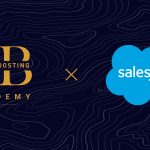THE DEAL IS DEAD BUT THE CLIENT IS STILL ALIVE
25 April 2022
Often you will not get great results from a single interaction with a client. Even if your client is qualified and does not buy from you today, it does not mean they will not in the future. Most purchases require consistent effort and are part of a time-consuming process that requires perseverance, creativity, and a fair amount of patience. This is valid for the premium and luxury business, as it is for any business in the world.
Confusing the management of the client with the management of the deal are two different issues that require different actions. This confusion often prevents salespeople from taking any action.
We detail hereafter some of the many tips that could be useful for sales advisors :
- Visits or transactions are not complete without a follow-up. This is the mindset to boost performance. A client who visits your store remains a client and represents an opportunity even if he/she does not buy at that moment. If you are thinking in the long term, an appropriate follow-up will be a differentiating factor. Follow-ups are a necessary part of the sales process and a way to build trust over time.Whether it is to purchase a €95.000 car or a €6.500 watch – as surprising as it might be – follow-ups are not that frequent or common practice. As clients, we have experienced many times and recently in numerous luxury stores and showrooms that the expected follow-ups after a visit are too rare. As a client, when was the last time a sales advisor called you a few weeks after a visit to their store or to their showroom to find out if you were still thinking about it, to offer you to try to drive the car you liked during your last visit or to revisit their store with your wife because there is a surprise waiting for her?You know the answers…. Appropriate follow-ups should be part of your KBIs (Key Behavior Indicators) and should be measured.
- The most common objection we hear from clients during visits is “Let me think about it…” So how do you follow up without being too pushy or too aggressive or without sounding desperate?Whatever the objection is, prospects often lie to hide the reasons why they are not buying from you. They do not want to hurt your feelings, do not trust you fully, or may want to look elsewhere to find a better deal.One of the best ways to address this objection is to empathize with the client “Of course Sir/ Madam, I do understand; this is an important decision that requires your full consideration”. Then you can go further by asking for example: “Sir/Madam, where does you hesitation come from?”, or “What are the reasons for your hesitation?” Your objective is not to close the deal but to understand your client’s real motivations so that you can take the appropriate next steps.
Afterwards, one action that you may take to deal with this objection is to never end the conversation with your client without reaching a commitment from him, without agreeing on a time frame for the next step. You cannot leave the deal without setting any clear deadline or specific and tailored follow-up actions. The follow-up should be part of the NSO (Next Step Obsession) mindset which must focus on developing the relationship.
Will you talk to them in a fortnight, in a month? You need to agree the time frame with them before they leave your store or showroom. As a professional sales advisor, you need a real and concrete commitment, acleartime frame for the next steps.
- Lastly, follow up with specific content that is relevant and tailored for each client. The follow-up is not for you, to simply tick off your “to-do list”, or to please your management. Your role is to cater your client’s needs and to build trust, whether it is for one or more future sales. You want to follow up actively with content that gives them extra value and helps them make their decision. Make the follow-up about them and not about you. Your goal should be to “touch their heart, so that one day you can touch their wallet”.It is best not to make the follow-up about your brand or product, which feels only transactional. You can follow up by asking “How are you doing? Have you found out what you are looking for? Alternatively, if they have come to visit you to see a specific watch (e.g., a chronograph), give them information about the world of chronographs or send them an interesting article on the best chronographs on the market. Your objective is to be fully trusted, to advise, and to stay in your client’s top-of-mind, not in a pushy but helpful, simple, and practical way. Make your message sounds natural, spontaneous, personal, and emotional, as emotions tend to drive our decisions. Avoid corporate and standardized messages in order to stand out from the majority of brands whose follow-ups are often boring, ready-made, and not emotional. Provide value with generosity, help, and support to build the relationship and trust. They will soon value you as an expert so they will come back to you or bring you some referrals.
The deal is dead for now but the client is still alive…. So, keep the relationship with your client alive so that one day the deal will come back to life. It is only a matter of time and of perseverance.









